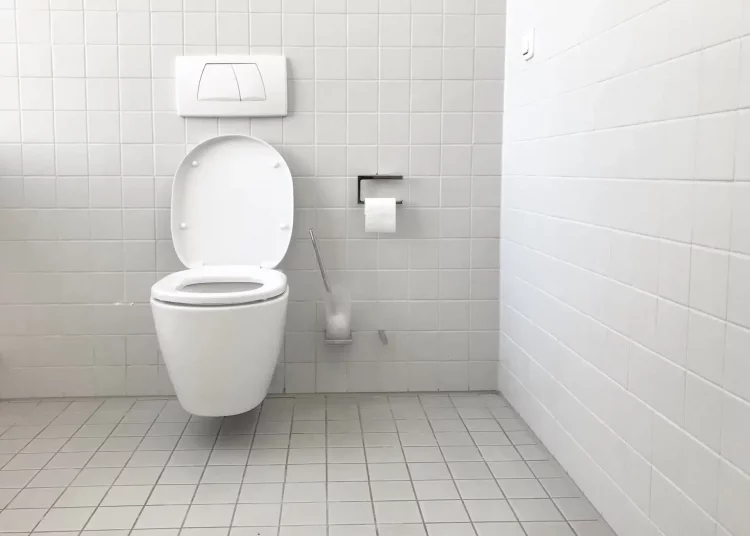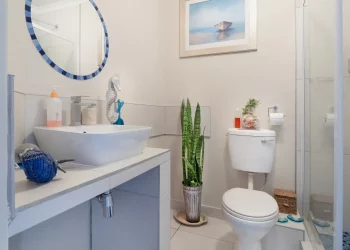Are you tired of dealing with a clogged toilet? If so, you’re not alone. Over time, toilets can become clogged for a variety of reasons — from too much toilet paper to objects that have been flushed down the drain. Whatever the cause of your clogged toilets, there is a way to fix it without calling a plumber.
With a little elbow grease and the right tools, you can clear most clogs yourself. No matter how big or small the clog is, unclogging the toilet is a task that anyone can do. So if you’re ready to unclog your toilet like a pro, read on!
What You’ll Need
Clogged drains are common plumbing problems, but they’re usually easy to fix. To unclog your toilet, you’ll need:
- A plunger: Toilet plungers come in a variety of shapes and sizes, but the most important thing is to make sure that you get one that’s the right size for your toilet. If the plunger is too small, it won’t create enough suction to clear the clog. If it’s too large, it could end up damaging your toilet.
- A bucket: You’ll use this to catch the water that will inevitably spill out when you’re plunging the toilet. Make sure to position the bucket underneath the toilet bowl before you start so that you don’t have to move it later on and risk spilling even more water.
- Rubber gloves: Toilet water can contain all sorts of bacteria and other nasty things, so you definitely don’t want it coming into contact with your skin. Put on a pair of rubber gloves before you start plunging, and take them off as soon as you’re finished.
- Rags: Old towels are always handy to have around when dealing with plumbing issues. Have a few old towels on hand to clean up any water that spills out and to dry off your hands after you’re done plunging.
- A drain snake: If plunging doesn’t do the trick, then you may need to resort to using a plumber’s snake. This is a long, flexible piece of equipment that can be inserted into the toilet bowl to reach deep-seated toilet clogs.
- Baking soda, dish soap, and hot water: These could come in handy if the clog is caused by a build-up of grease or soap scum.
How to Plunge a Toilet
Once you have all of the necessary supplies, you’re ready to start plunging! Here’s how to use toilet plungers for clogged toilets:
Step by Step Instruction:
Step 1: Put on rubber gloves to avoid contact with dirty toilet water.
Step 2: To begin, place the plunger over the hole at the bottom of your toilet bowl. Ensure that the suction cup touches all sides of the hole. You may need to add or remove some water from the bowl for this to happen.
Step 3: Use firm pressure to push the plunger up and down in a continuous motion. You’ll know it’s working when you hear the air being forced through the dirty water, which will help break up whatever is causing the blockage.
Step 4: After 30 seconds of plunging, lift up the plunger to see if the water level has gone down. If it has, congratulations! You’ve successfully cleared the blockage. If not, keep trying until you’re successful.
Step 5: Flush the toilet to ensure everything is flowing correctly, and then wash your hands thoroughly.
Toilet Surgery: What to Do When Plunging Fails
If your toilet is backed up and plunging fails to clear the blockage, you may need to remove the toilet and access the drain hole from the floor. This is a relatively easy process that most homeowners can do themselves, but it does require a few tools and some knowledge of how your toilet works. Here’s a step-by-step guide on what to do when plunging fails, and you need to resort to toilet surgery.
1. Remove the tank lid and set it aside. Flush the toilet to empty as much water from the toilet tank as possible.
2. Using pliers or an adjustable wrench, loosen the bolts that secure the tank to the bowl. Lift off the tank and set it aside.
3. Inspect the bowl for any visible obstructions and remove them if possible. You may need to snake the bowl if you can’t reach the obstruction (see step 4).
4. If snaking the toilet isn’t working, you’ll need to remove the entire bowl from the floor. First, turn off the water supply valve behind or under your toilet and flush it once so that as much water as possible is emptied. Next, use an adjustable wrench to disconnect the fill valve from its water line. Finally, unscrew the two bolts holding down the bowl and lift it off carefully (so as not to damage your floor). Inspect both for anything blocking them before reversing this process to put everything back in place.
5. Once everything is back in place, turn on the water supply valve and flush the toilet to fill up the tank and bowl with fresh water.
6. Test the toilet by flushing it several times. If it’s still not draining properly, it’s time to bite the bullet and call a plumber. It’s better to be safe than sorry.
You might be interested in our DIY tips: How to Paint a Sink: Easy Steps, Cost, and Helpful Tips
Five Amateur-Proof Toilet Plunging Tips
Although annoying, a clogged toilet is a fairly common problem that every homeowner will likely encounter at some point. While the cause of a clogged toilet can vary, there are foolproof methods for unclogging even the most stubborn toilet clogs. So, try one of these five plunging tips before you call a professional (or give up and flush away your dignity).
1. The right type of plunger makes all the difference
Did you know that there are two basic types of plungers? Many people make the mistake of using a sink plunger on their toilet, but this will not create adequate suction to clear the blockage. Toilet plungers have an extra flap that creates a proper seal specifically designed for toilets. Be sure to use a toilet plunger for an effective plunge.
2. Add some lubrication using a dish soap
If your plunger isn’t doing the trick, try adding some lubrication to the equation. Splash some soapy water around the rim of the toilet bowl before you start plunging. The dish soap will help break up the waste and lubricate the bowl, making it easier for the plunger to do its job.
3. Use Hot Water with Caution
You’ve probably heard that hot water can help dissolve whatever’s clogging your drain pipe. But beware, pouring boiling water into your toilet bowl can crack your porcelain throne. Add hot water to your bowl, but do so slowly and carefully to avoid damaging your toilet.
4. Let Gravity Do Its Job
If hot water and plunging aren’t enough to break up the clog, try this old-fashioned method: Waiting. That’s right, sometimes all you need to do is wait it out and let gravity do its job. If you have a second bathroom in your home, go ahead and take a shower or brush your teeth while you wait—but don’t flush! The longer the water sits in your bowl, the better chance gravity has of breaking up the clog so it can drain away.
5. Sometimes You Need Professional Help
If you’ve tried everything and nothing seems to be working, it may be time to call reinforcements. Plumbing experts have seen all sorts of common plumbing issues, so they know exactly what tools and techniques to use to get your toilet pipes flowing again, no matter how stubborn the clog may be.
Check our other article: Unclog Your Bashful Bowels With These Toilet Plungers
Frequently Asked Questions About Toilet Plunging
What is the best way to plunge a toilet?
The best way to plunge a toilet is to use a toilet plunger with an extra flap that creates a complete seal specifically designed for toilets. Be sure to add some lubrication, such as soapy water, before you start plunging. You can also try using hot water. Be careful not to pour boiling water into your toilet bowl as it can crack the porcelain.
Will plunging damage my toilet?
No, plunging will not damage your toilet. However, if you use too much force or do not create a proper seal, you may crack the porcelain on your toilet bowl.
What type of plunger should I use?
The best plunger to use is a bellows or force cup plunger. These plungers create an air seal around the toilet hole and are more effective at clearing clogs than other plungers.
What should I do if I accidentally drop something into the toilet?
If you accidentally drop something into the toilet, it is important to try and remove it as soon as possible. You need to contact a professional plumber for assistance if you cannot remove the item yourself. Plumbers have special tools that they can use to remove items that have been dropped into toilets without damaging the fixture.
How often should I clean my toilet?
It is generally recommended that toilets be cleaned at least once per week. However, if your bathroom sees heavy use, you may need to clean it more frequently. When cleaning your toilet, be sure to use a brush or cleaner specifically designed for toilets, as regular household cleaners can damage the porcelain surface.
What should I do if my plunger doesn’t work?
If your plunger does not seem to be working, you may need to try using a different type of plunger. There are two main types of plungers: cup plungers and flange plungers. Cup plungers are designed for general-purpose use, while flange plungers are designed explicitly for toilets with recessed drains. If you have a flange plunger, ensure that the rubber flap covers the entire toilet drain opening before using it.
What should I do if I can’t unclog my toilet?
If you cannot unclog your toilet with a plunger or toilet snake, you may need to call a professional plumber for assistance. Do not attempt to fix the problem, as this could worsen and lead to expensive repairs.
Final Note
Plunge toilet techniques are not always effective, but they are definitely worth a try before you call in a professional. If you’re still having trouble after using a baking soda toilet bowl cleaner or trying all of the methods above, then it may be time to contact a plumbing service. An expert plumber will be able to quickly diagnose the issue and provide a solution that works for you.
We hope that this has been helpful and that you can now unclog your toilet with ease! Remember, if all else fails, there’s always the plunger method to fall back on.




















